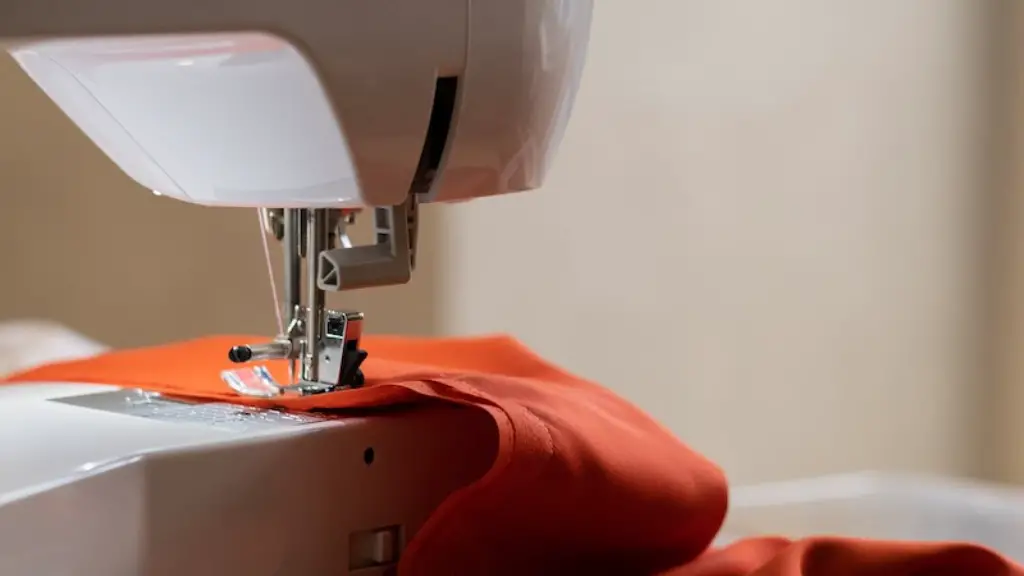Introduction:
Singer sewing machines are considered to be one of the most versatile and easy to use sewing machines available.In this article, we will take a look at how to operate a Singer sewing machine in order to best utilize its features and make the most of your sewing project.First and foremost, it is important to properly set it up to ensure your safety and reduce potential sewing errors.The following steps are designed to give you the basic information you need to begin operating your Singer sewing machine.
Tools Needed
In order to operate a Singer sewing machine, you will need a few basic tools.These include a pair of scissors, a seam ripper, a measuring tape, thread, a needle and of course the machine itself.In addition, you may want to purchase a special presser foot and bobbin winder in order to make the machine’s use easier and more convenient.
Plugging In the Machine
Once you have gathered all of the necessary tools, the next step is to plug the machine in.It is important to make sure that the machine is plugged into a power source with a voltage that matches the voltage indicated on the machine’s tag.If the voltage does not match, the machine may not work properly or could potentially become damaged.
Threading the Machine
The next step is to thread the machine.First, take the spool of thread and place it on the spool pin.Then take the end of the thread and pull it through the thread guide before inserting it into the tension disc.After the thread is in place, use the bobbin winder to thread the bobbin and insert it into the shuttle.Finally, use the presser foot lever to raise the presser foot and hold the thread in place.
Selecting the Stitch
Now that the machine is ready to go, you can select the stitch that you would like to use. Moderen Singer sewing machines have many different stitches to choose from including straight, zig-zag and buttonhole stitches.Select the stitch you would like to use by turning the stitch selector dial to the desired setting.
Start Sewing
Now that the machine is all set up and ready to go, you can place the fabric under the presser foot and start sewing.Before you begin, it is important to adjust the stitch length and width according to the fabric you are sewing.Once everything is in place, move the needle up and down and side to side to ensure it is in the right position before pressing down on the foot pedal to begin sewing.
Maintenance Tips
To keep your Singer sewing machine in tip-top shape, there are a few things you should do on a regular basis.Be sure to dust it regularly and check for any damage such as frayed wires or broken parts.Also, it is important to oil the machine frequently in order to keep it running smoothly.Finally, if you plan on storing the machine for an extended period of time, be sure to unplug it and cover it in a soft cloth to protect it from dust and dirt.
Sewing Tips
To get the most out of your Singer sewing machine and create beautiful projects, here are a few sewing tips to keep in mind.First, be sure to use the correct needle size and type for the fabric and thread you are using.Second, always test the stitch on a scrap piece of fabric before beginning a project.Finally, use pins and mark the fabric with a fabric pencil to help guide your sewing and keep it straight.
Other Uses
Singer sewing machines are great for more than just sewing clothing.You can use them to create a variety of other items, such as quilts, pillows, curtains, and even upholstered furniture.They are also great for mending and repairing clothing and other fabric items.
Types of Singer Sewing Machines
When it comes to Singer sewing machines, there are several different types to choose from.The most basic type is the mechanical sewing machine, which is operated by a hand crank.Electronic sewing machines are the most advanced, and feature computerized features for faster and more precise sewing.Finally, there are quilting machines, that are specially designed for quilting projects.
Conclusion
In conclusion, we have covered a few basics on how to operate a Singer sewing machine. We have looked at the tools needed, how to thread and plug it in, and how to select the right stitches.We also discussed maintenance tips and other uses for Singer sewing machines, as well as types of Singer sewing machines.Once you understand how to operate a Singer sewing machine, you will be well on your way to creating beautiful projects.


